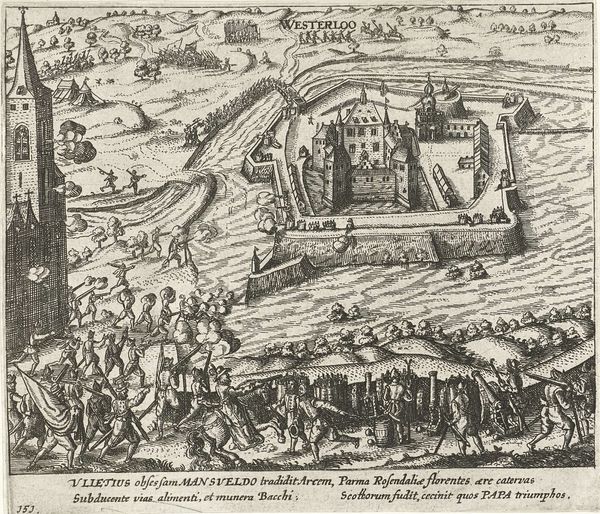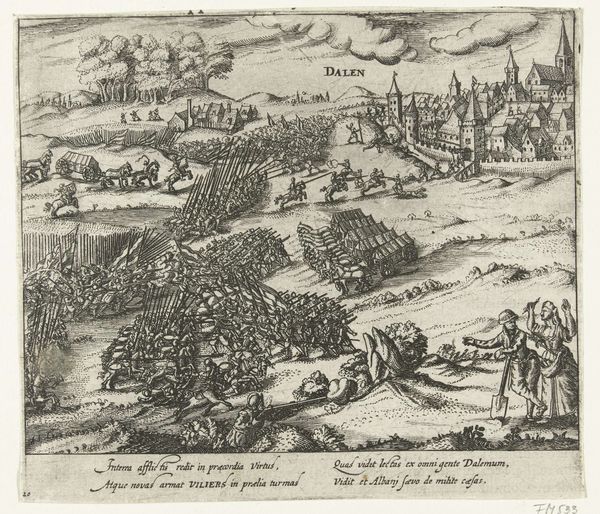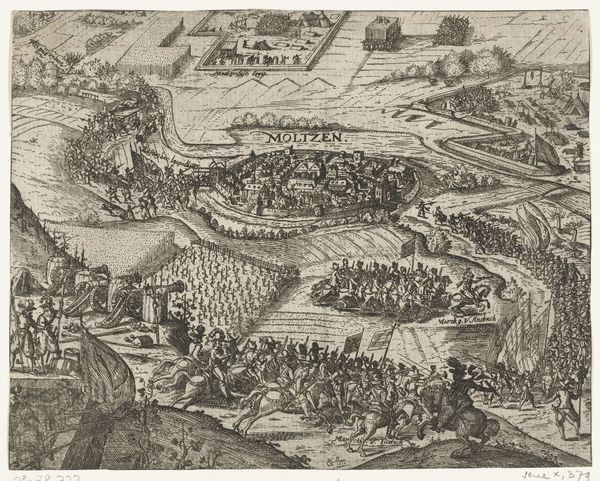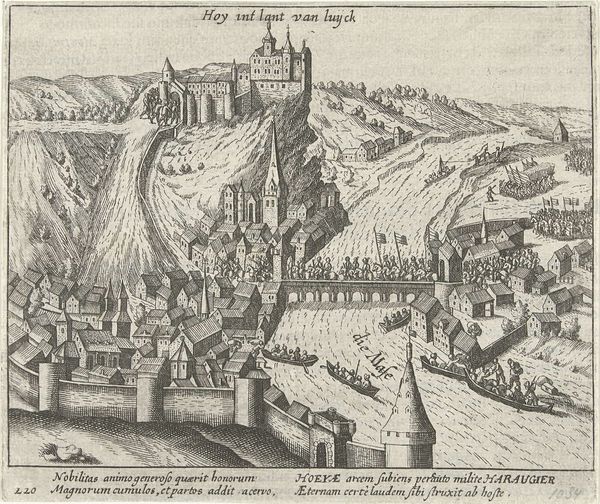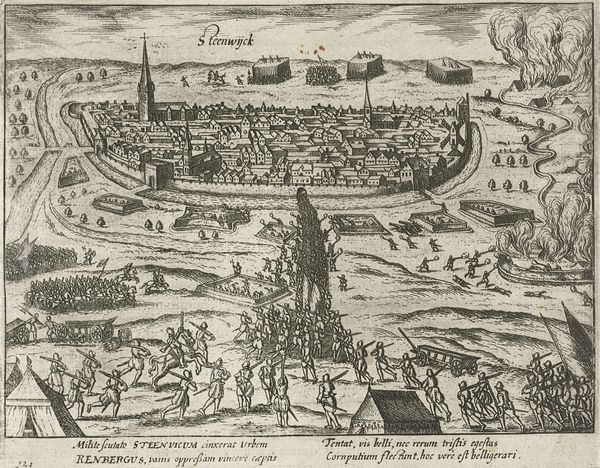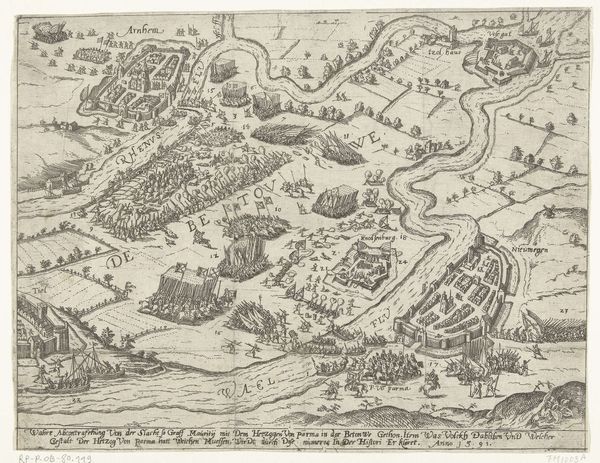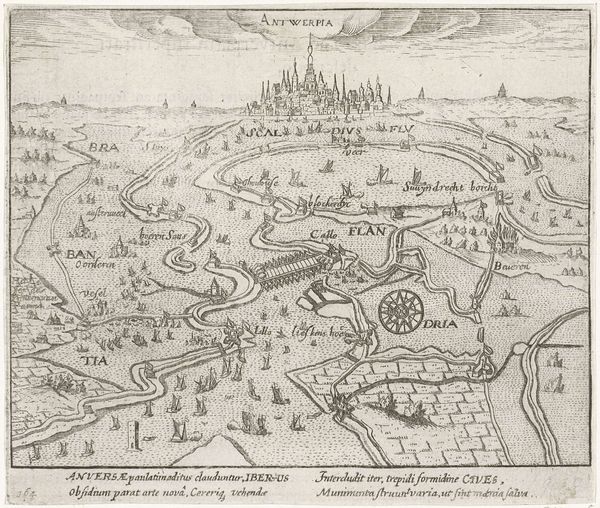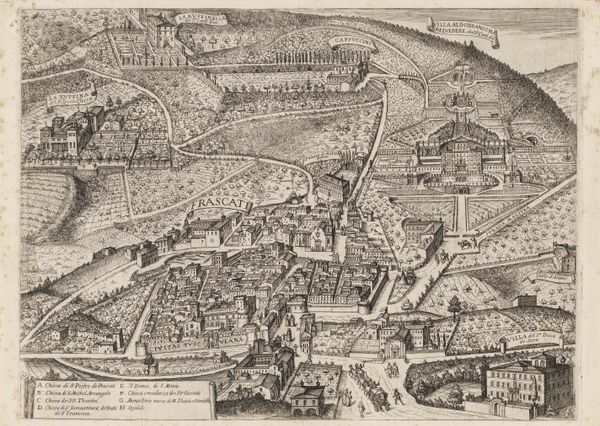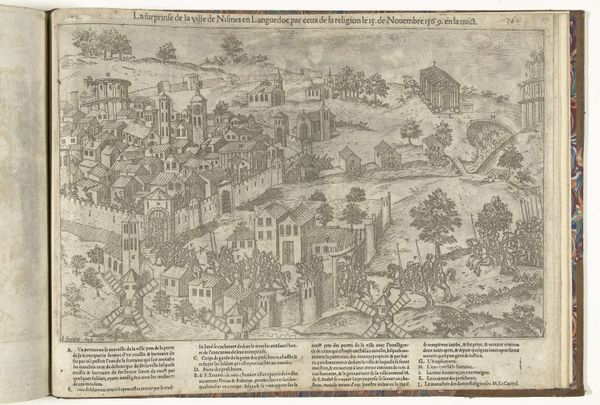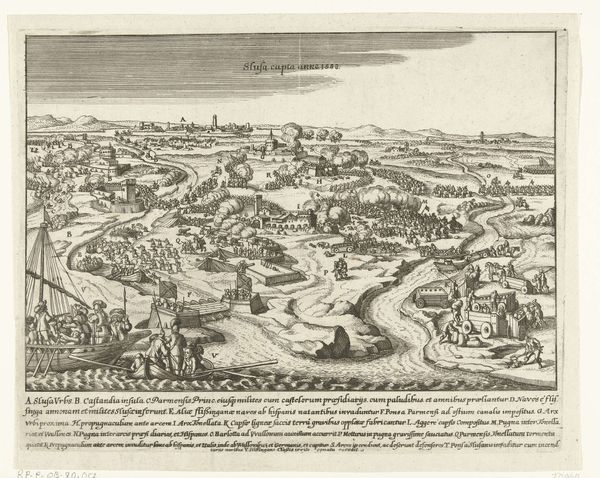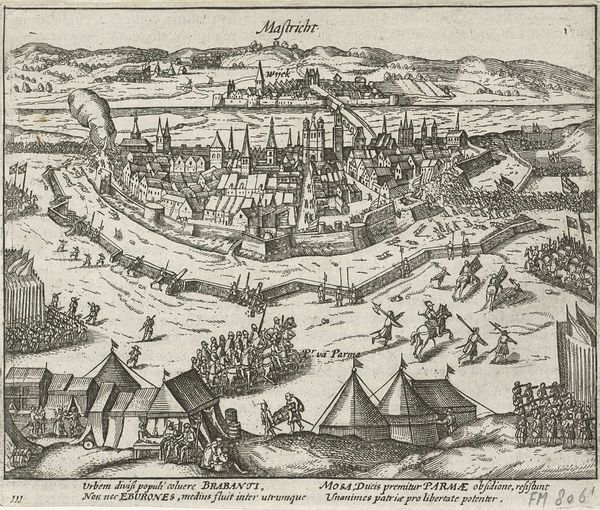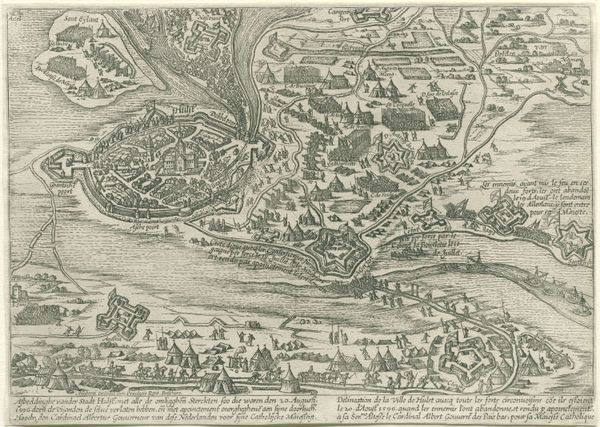
print, engraving
#
pen and ink
#
medieval
#
pen drawing
# print
#
old engraving style
#
cityscape
#
history-painting
#
northern-renaissance
#
engraving
Dimensions: height 197 mm, width 275 mm
Copyright: Rijks Museum: Open Domain
Curator: This is "Herovering van Hoei door de bisschop van Luik, 1595", or "The Capture of Huy by the Bishop of Liège, 1595," created between 1595 and 1633 by an anonymous artist. It's an engraving housed in the Rijksmuseum. Editor: It feels like a detailed news report of the time. The sheer density of figures is remarkable, conveying the chaos of battle. What's your interpretation of this scene? Curator: Beyond the immediate depiction of military action, this piece offers a powerful insight into the dynamics of power, religion, and societal control in the late 16th century. The Bishop of Liège, leading the charge, embodies the intersection of religious authority and political ambition. Consider how the artist emphasizes the role of the Catholic forces. How might that be reflective of the power structures of the era? Editor: I see that! It’s not just a capture; it’s a religious reclamation, right? It really underlines the importance of viewing this artwork in the context of the religious conflicts that dominated that period. Curator: Precisely. Think about the word "reclamation". It suggests something that was taken by force and needed to be reclaimed to right the old wrongs. The depiction of the city and fortress isn't just topographic; it also symbolizes what was worth defending. Also, let's talk about anonymity. Why do you think that is? How does it frame the message it’s portraying? Editor: Anonymity perhaps makes the message less about a single artistic vision and more about collective action and its broader implications. Curator: Exactly! By understanding the socio-political conditions under which it was made, we can recognize how the piece actively contributes to solidifying an authoritative narrative that seeks to persuade the public. Editor: I’m walking away with a much deeper appreciation of how history painting and printmaking served as vital tools for shaping and reinforcing religious and political viewpoints. Curator: Me too. Thinking about the way the artist situated religious justification for what, essentially, appears to be violent and politically driven activity provides critical insights into propaganda.
Comments
No comments
Be the first to comment and join the conversation on the ultimate creative platform.
